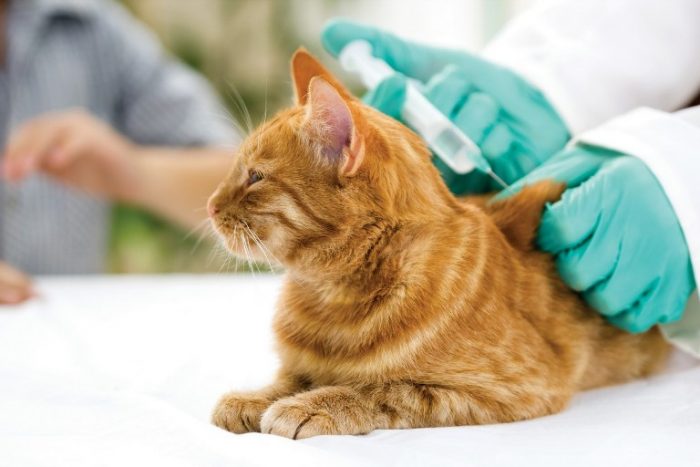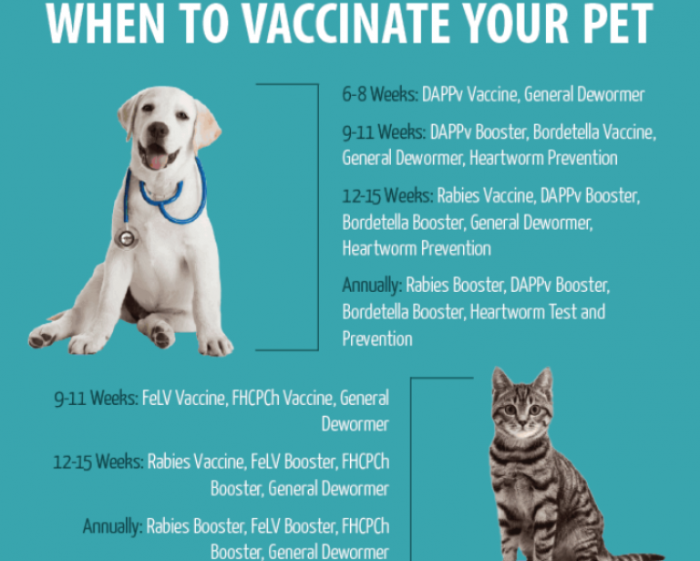Our pets are so dear to us, they protect us, and act as our companions and loyal friends. As pet parents, we want to see our canine and feline friends happy, bursting with energy, playful, and thriving with life. This is why we feed them, walk them, and cater to them to make sure they develop properly. As adopters who are caring, one of our key responsibilities is to care for the health needs of these pets – this is where the pet vaccination schedule comes in.
No one would love to sit and watch their furball fall ill if they can do something about it. Vaccination plays a major role in the prevention of risky and unnecessary diseases. However, there are guidelines to follow to be able to give your pet the best medical care.
Table of Contents
Core and Non-core Vaccinations

In the same way as humans, a pet vaccination schedule may include a booster dose to keep them working effectively. The best way for owners to stay on this schedule is to follow the recommendations of a professional. This schedule may be broken down into a couple of categories by the veterinarian – the core vaccines and non-core vaccines.
The core pet vaccines are the ones that every pet must take, both cat and dog. On the other hand, the vet will be the one to advise owners on the need for non-core vaccines; however, this will be highly dependent on the lifestyle of your canine or feline friend. For instance, the vet can recommend certain vaccination for cats and dogs that often stay indoors or the ones that are outdoor-only pets. There are vaccinations that can be administered as early as six weeks old, thus the vet is the best person to consult about the best pet vaccination schedule to follow, for a puppy, kitten, adult dog, and cat.
Pet Vaccination Schedule For Pups: Both Core And Non-core Vaccines
| Dog Vaccine | Initial Puppy Vaccination (at or under 16 weeks) | Initial Adult Dog Vaccination (over 16 weeks) | Booster Recommendation | Comments |
| Rabies 1-year | Can be given in a single dose, as early as 3 months. The age at which it will be first administered is regulated by the States | One dose | Yearly boosters are essential. | Core dog vaccine. Rabies has no known treatment and is 100% fatal to pups, Prevention is the only way. |
| Rabies 3-year | Can be given in a single dose, at 3 months. The age at which it will be first given is regulated by the states | One dose | Recommendations are for your dog to take a second vaccination after a year with boosters coming every 3 years. | Core dog vaccine. |
| Distemper | A dog must take 3 doses at least, and between age 6 and 16 weeks | 2 doses, given 3 to 4 weeks apart |
Following the completion of their initial series Puppies will need a booster after 1 year, then all adult dogs require a booster at 3 years intervals or more. |
Core dog vaccine. Distemper is a severe disease that, among other problems, may cause permanent brain damage. It is a result of an airborne virus, |
| Parvovirus | At least 3 doses administered between ages 6 to 16 weeks | 2 doses, 3-4 weeks apart | One year after they have completed their initial series, puppies will require a booster, then all adult dogs will require a booster at 3 years intervals or more often. | Core dog vaccine. Canine “parvo” is highly contagious and can lead to severe bloody diarrhea and vomiting. If left untreated, Parvo is generally fatal |
| Adenovirus, type 1 (CAV-1, canine hepatitis) | At least 3 doses, given between ages 6 to 16 weeks | 2 doses, 3-4 weeks apart | With their initial series completed, puppies will need a booster after 1 year, then all adult dogs will require a booster at 3 years intervals or more often. | Core dog vaccine. Spread through contaminated urine and fecal matter; canine hepatitis can cause severe liver damage, and ultimately death. |
| Adenovirus, type 2 (CAV-2, kennel cough) | At least 3 doses, to be given between ages 6 to 16 weeks | 2 doses, 3-4 weeks apart | Following the completion of their initial series, puppies will require a booster after1 year, then all adult dogs require a booster at 3 years interval or more often. | Core dog vaccine. Spread through sneezes and coughs. |
| Parainfluenza | Given between ages 6 to 8 weeks, then every 3 to 4 weeks until the puppy is 12 to 14 weeks old | 1 dose | A booster may be needed after 1 year, but this depends on the recommendations of the manufacturer; revaccination at 3 years interval is considered protective. | Non-core dog vaccine. Parainfluenza infection (not the same as canine influenza) causes fever and cough. It may be associated with Bordetella infection. |
| Bordetella bronchiseptica (kennel cough) | Depending on the type of vaccine; 2 doses are required for protection | 2 doses of the injected product or a single dose of the oral or intranasal product
|
Yearly or 6-month boosters may be required for pups living in high-risk environments. | Non-core dog vaccine. The condition is not usually serious, though it can be fatal in young puppies. It usually occurs after activities like showing or boarding. |
| Lyme disease | A single dose, given as early as 9 weeks, followed by a second dose at 2 to 4 weeks later | 2 doses, 2-4 weeks apart | It May be required annually, before the beginning of tick season | Non-core dog vaccine. Generally recommended for only dogs with a high risk of exposure to Lyme disease-carrying ticks. |
| Leptospirosis | The first dose to be given as early as 8 weeks, followed by a second dose 2 to 4 weeks later | 2 doses, 2-4 weeks apart | Pups in high-risk areas should take it at least once annually | Non-core dog vaccine. Vaccination is generally limited or restricted to areas that are established as high risk. Exposure to standing water and rodents can cause a leptospirosis infection. |
| Canine influenza | The first dose to be given as early as 6 to 8 weeks; second dose 2 to 4 weeks later | 2 doses, 2-4 weeks apart | Annually | Non-core dog vaccine. It is similar to bordetella. |
Read Also: Dog Vaccinations Schedule You Should Follow
Pet Vaccination Schedule for Cats: Core and Non-core Vaccines
| Cat Vaccine | Initial Kitten Vaccination (at or under 16 weeks) | Initial Adult Cat Vaccination (over 16 weeks) | Booster Recommendation | Comments |
| Rabies | 1 dose is to be given as early as 8 weeks old, but this depends on the product. Revaccinate after 1 year. | 2 doses, 12 months apart | Required yearly or at 3 years interval, but this depends on the vaccine used. The type and frequency of booster required may be determined by state regulations. | Core cat vaccine. Rabies is 100% fatal to kitties, there is no known treatment. Prevention is key. |
| Feline Distemper (Panleukopenia) | Given at 6 weeks, then every 3 to 4 weeks until the cat is 16 weeks old | 2 doses, 3-4 weeks apart | A single dose is administered a year after the initial series is completed, then every 3 years. | Core cat vaccine. Feline distemper is very severe and contagious; it commonly strikes kittens and can lead to death. |
| Feline Herpesvirus | Administered at 6 weeks, then every 3 to 4 weeks until the cat is 16 weeks old | 2 doses, 3-4 weeks apart | A single dose is administered a year after the initial series has been completed, then every 3 years. | Core cat vaccine. Feline herpesvirus leads to feline viral rhinotracheitis (FVR), a highly contagious upper respiratory health condition. |
| Calicivirus | Given at 6 weeks, then every 3 to 4 weeks until the cat is 16 weeks old. | 2 doses, 3-4 weeks apart | A single dose is administered a year after the initial series has been completed, then every 3 years. | Core cat vaccine. A highly contagious upper respiratory health condition that can lead to oral ulcerations, joint pain, anorexia, and fever. |
| Feline Leukemia Virus (FeLV) | Given at 8 weeks, then 3 to 4 weeks later | 2 doses, 3-4 weeks apart | Every 2 years for kitties at low risk; every year for the ones at higher risk | Non-core cat vaccine. The cat Should test FeLV negative prior to administration. Transmitted through cat-to-cat contact. Can lead to cancer, immunosuppressant |
| Bordetella | As early as 4 weeks | 2 doses,1 year apart | Annually | Non-core cat vaccine. An infectious upper respiratory health condition. |
